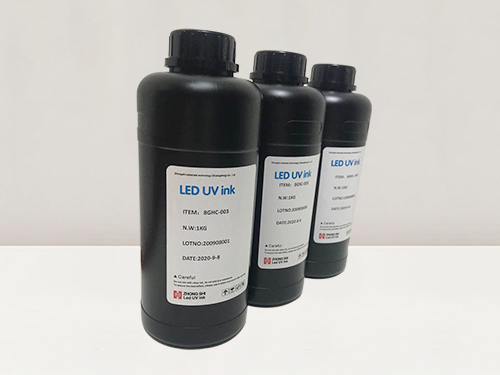Due to poor adaptability, UV ink often encounters adhesion issues compared to traditional solvent based inks. So, what are the common reasons and solutions? Below is a detailed analysis for everyone:
1. Incomplete ink curing
Incomplete ink curing is related to the speed of ink curing. For yellow, magenta, cyan, and black UV inks, black ink generally has the slowest curing speed. In addition, controlling the curing effect of ink not only requires controlling the pH value of the fountain solution, but also the characteristics of the ink itself. The ink used must meet the performance requirements of the ink roller and match the UV wavelength of the UV lamp.
Even UV inks produced by the same manufacturer may have different curing characteristics for four color inks. In this case, products from two or three ink factories can be selected to choose the most suitable ink. The purpose of doing this is to mix inks from different manufacturers while ensuring that the printed material is completely cured. In addition, it is necessary to regularly check the power of UV lamps to ensure that they operate within the normal power range. This can prevent ink loss caused by incomplete ink curing.
2. The surface of the substrate is not treated thoroughly
It is important to conduct strict degreasing and pre-treatment checks on the substrate before printing. When the surface of the substrate is coated with substances such as oils, adhesives, and dust, it can cause poor adhesion between UV ink and the substrate. Insufficient surface treatment of plastic products before printing can also cause ink adhesion issues.
3. Some materials require flame or corona treatment or other special treatments
As a printing material, polyethylene (PE) must undergo surface flame treatment to improve its adhesion to ink during printing. If it is a metal material, it must undergo degreasing and dust removal before printing. After printing, it should be dried according to the required temperature of the ink. Improper drying can also cause ink film peeling failure. In addition, in textile printing, in order to make textiles waterproof, silicon processing is generally required, so that poor ink adhesion is not easy to occur during printing.

4. Low surface tension of the substrate can cause poor UV ink wetting and affect adhesion
When printing aluminum foil, polyester cardboard, or PET When using PVC and other substrates, problems such as poor ink adhesion and lack of friction resistance are often encountered. This may be related not only to incomplete ink curing, but also to the low surface tension of the printing material itself.
Generally speaking, if the surface tension of the substrate is 1.0X10-2N/m higher than that of the ink, the ink can adhere to the surface of the substrate. Different types of ink have different requirements for the surface tension of the substrate. For solvent based inks, if the surface tension of the substrate is above 3.8X10-2 N/m, the ink can adhere well, while UV inks require the surface tension of the substrate to reach (4.O-4.2) Over 10-2N/m.
5. The shrinkage of UV ink greatly affects adhesion.
Adding a certain amount of monofunctional active diluent or a small amount of filler can reduce the shrinkage of UV ink and improve adhesion. In addition, adding UV ink adhesion promoter can improve the physical adsorption between UV ink and substrate, thereby enhancing adhesion.
6. Poor adhesion of UV ink itself
The insufficient adhesion of UV ink itself causes the ink film to not firmly adhere, and it is necessary to replace it with other types of UV ink for printing. Improper selection or excessive addition of diluent monomers can also lead to weak adhesion of UV ink. When selecting active monomers, the properties of the ink and the amount of addition should be considered to avoid weak adhesion between the ink and the substrate.
7. The printing environment is humid and the temperature is low
In this case, adding 3% -5% appropriate curing agent can promote curing and improve adhesion.